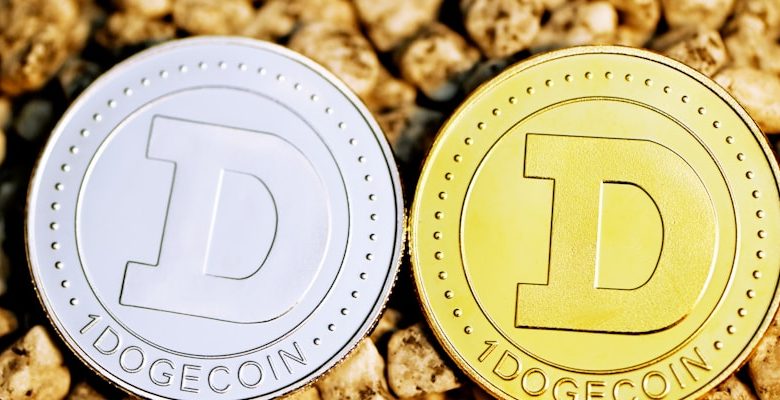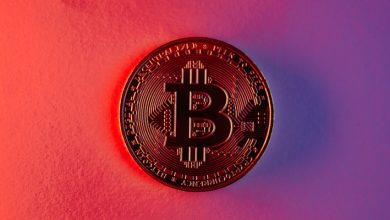DeFi Explained: A Comprehensive Guide to Decentralized Finance

- Understanding the Basics of DeFi
- The Evolution of Traditional Finance to DeFi
- Key Concepts and Terminology in Decentralized Finance
- Exploring the Benefits of DeFi for Users
- Challenges and Risks Associated with DeFi
- The Future of Decentralized Finance: Opportunities and Trends
Understanding the Basics of DeFi
Decentralized Finance, or DeFi, is a revolutionary concept that aims to transform traditional financial systems by leveraging blockchain technology. In essence, DeFi seeks to eliminate the need for intermediaries such as banks or brokers, allowing individuals to directly engage in financial activities like lending, borrowing, and trading using decentralized applications (dApps).
One of the key features of DeFi is its open and permissionless nature, which means that anyone with an internet connection can access and participate in the DeFi ecosystem. This accessibility is made possible by smart contracts, self-executing contracts with the terms of the agreement between buyer and seller directly written into code.
By removing intermediaries and automating processes through smart contracts, DeFi offers greater transparency, security, and efficiency compared to traditional finance. Users retain control of their assets at all times and can interact with dApps without needing to trust a central authority.
Overall, understanding the basics of DeFi is crucial for anyone looking to explore this innovative space. By familiarizing yourself with the principles of decentralization, smart contracts, and the various financial services available within the DeFi ecosystem, you can make informed decisions and take advantage of the opportunities that DeFi has to offer.
The Evolution of Traditional Finance to DeFi
Traditional finance has been the dominant system for handling financial transactions for centuries. However, with the advent of blockchain technology, a new form of finance has emerged – decentralized finance, or DeFi. DeFi represents a shift away from centralized financial institutions, such as banks, towards peer-to-peer transactions facilitated by smart contracts on the blockchain.
The evolution from traditional finance to DeFi has been driven by a desire for more transparency, security, and efficiency in financial transactions. In traditional finance, transactions are typically processed through intermediaries, such as banks or payment processors, which can lead to high fees, slow processing times, and a lack of transparency. DeFi, on the other hand, allows for direct peer-to-peer transactions, cutting out the middlemen and reducing costs and processing times.
One of the key innovations that has enabled the growth of DeFi is the development of decentralized exchanges (DEXs). DEXs allow users to trade digital assets directly with one another, without the need for a centralized exchange. This not only reduces the risk of hacking or fraud associated with centralized exchanges but also gives users more control over their funds.
Another important aspect of DeFi is the concept of decentralized lending and borrowing. In traditional finance, lending and borrowing are typically done through banks or other financial institutions, which can be restrictive and come with high interest rates. In DeFi, lending and borrowing are facilitated through smart contracts, which automate the process and eliminate the need for intermediaries, resulting in lower fees and greater accessibility.
Overall, the evolution from traditional finance to DeFi represents a fundamental shift in the way financial transactions are conducted. By leveraging blockchain technology and smart contracts, DeFi offers a more transparent, secure, and efficient alternative to traditional financial systems, empowering users to take control of their financial assets and participate in a truly decentralized financial ecosystem.
Key Concepts and Terminology in Decentralized Finance
Decentralized finance (DeFi) is a rapidly growing sector within the cryptocurrency industry that aims to revolutionize traditional financial systems by utilizing blockchain technology. To fully understand DeFi, it is essential to grasp key concepts and terminology that are commonly used in this space. Below are some important terms to familiarize yourself with:
- Smart Contracts: Self-executing contracts with the terms of the agreement directly written into code. They enable trustless and automated transactions on the blockchain.
- Liquidity: The ease with which an asset can be bought or sold without causing a significant change in its price. Liquidity is crucial for the efficient functioning of DeFi protocols.
- Decentralized Exchanges (DEX): Platforms that facilitate peer-to-peer trading of cryptocurrencies without the need for intermediaries. DEXs operate using smart contracts.
- Yield Farming: The practice of staking or lending cryptocurrencies to earn rewards or interest. It involves providing liquidity to DeFi protocols in exchange for tokens.
- Tokenization: The process of converting real-world assets into digital tokens that can be traded on blockchain networks. This allows for fractional ownership and increased liquidity.
Understanding these key concepts and terminology is essential for navigating the complex world of decentralized finance. By familiarizing yourself with these terms, you can better comprehend how DeFi protocols operate and how you can participate in this innovative financial ecosystem.
Exploring the Benefits of DeFi for Users
Decentralized Finance (DeFi) offers a wide range of benefits for users looking to take advantage of this innovative financial system. By utilizing blockchain technology, DeFi provides users with increased transparency, security, and control over their assets compared to traditional centralized financial systems.
One of the key benefits of DeFi is the ability to access financial services without the need for intermediaries such as banks or brokerage firms. This not only reduces costs for users but also provides greater financial inclusion for those who may not have access to traditional banking services.
Furthermore, DeFi allows users to earn passive income through various decentralized applications (dApps) such as lending platforms, liquidity pools, and yield farming. By participating in these activities, users can generate returns on their crypto assets without relying on traditional investment vehicles.
Additionally, DeFi enables users to maintain control over their assets at all times, as they are stored in decentralized smart contracts rather than being held by a third party. This reduces the risk of hacks, fraud, or other security breaches that are common in centralized financial systems.
Overall, the benefits of DeFi for users are vast and continue to grow as the ecosystem evolves. From increased financial freedom and security to the potential for passive income generation, DeFi offers a new and exciting way for individuals to interact with the world of finance.
Challenges and Risks Associated with DeFi
There are several challenges and risks associated with decentralized finance (DeFi) that users should be aware of before participating in this rapidly growing sector. One of the main challenges is the security vulnerabilities that come with smart contracts, which are the backbone of many DeFi platforms. These vulnerabilities can be exploited by hackers to steal funds, resulting in significant financial losses for users. Therefore, it is crucial for users to thoroughly research and assess the security measures in place before investing in any DeFi project.
Another challenge is the lack of regulatory oversight in the DeFi space. As DeFi operates outside of traditional financial systems, there is a higher risk of fraud and scams. Without proper regulations in place, users are more vulnerable to malicious actors looking to take advantage of the decentralized nature of DeFi platforms. It is important for users to exercise caution and conduct due diligence before engaging with any DeFi project to mitigate these risks.
Furthermore, the fast-paced and rapidly evolving nature of DeFi presents its own set of challenges. New projects are constantly being launched, each with its own unique features and risks. It can be overwhelming for users to keep up with the latest developments and assess the viability of each project. This dynamic environment requires users to stay informed and adapt quickly to changes in order to make informed investment decisions.
The Future of Decentralized Finance: Opportunities and Trends
As decentralized finance (DeFi) continues to gain traction in the financial world, the future of this innovative technology is full of opportunities and exciting trends. One of the key trends we are seeing is the increasing integration of DeFi protocols with traditional financial systems. This convergence opens up new avenues for collaboration and growth, allowing for a more seamless experience for users looking to access a wide range of financial services.
Another trend shaping the future of DeFi is the rise of decentralized autonomous organizations (DAOs). These entities, governed by smart contracts and run by community votes, are revolutionizing the way decisions are made in the DeFi space. With DAOs, participants have a direct say in the direction of projects and protocols, creating a more democratic and transparent ecosystem.
Furthermore, the future of DeFi is likely to see an expansion in the types of assets that can be utilized within decentralized platforms. From tokenized real estate to commodities and beyond, the possibilities for asset tokenization are virtually limitless. This trend opens up new investment opportunities for users and provides greater liquidity to markets that were once illiquid.



